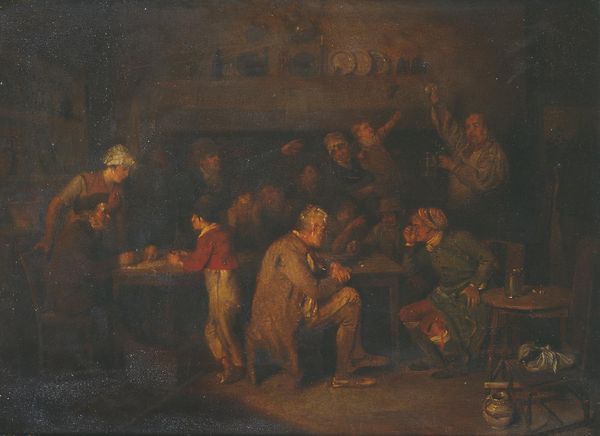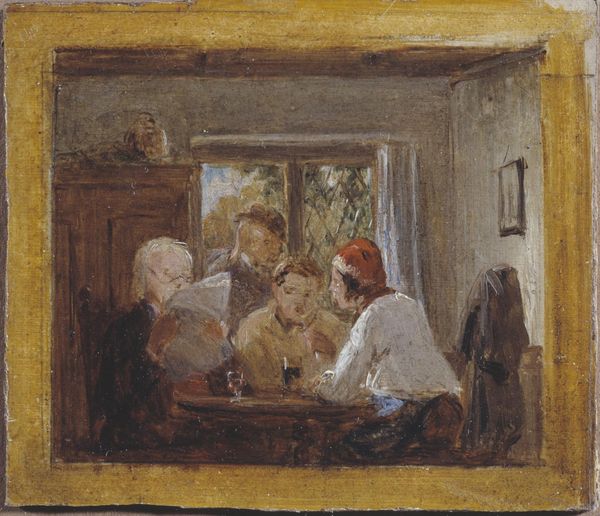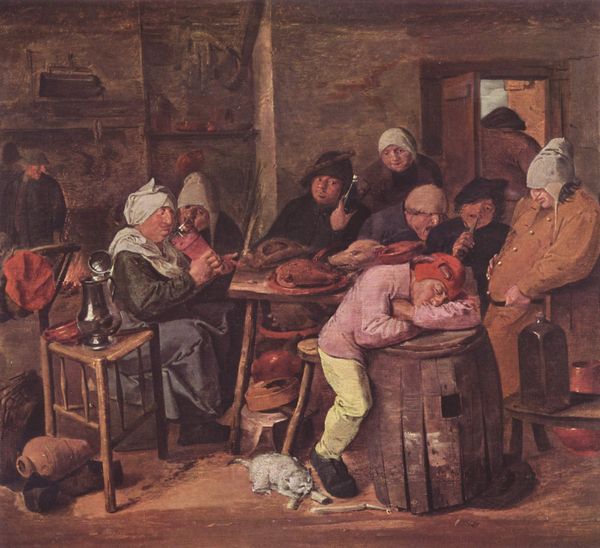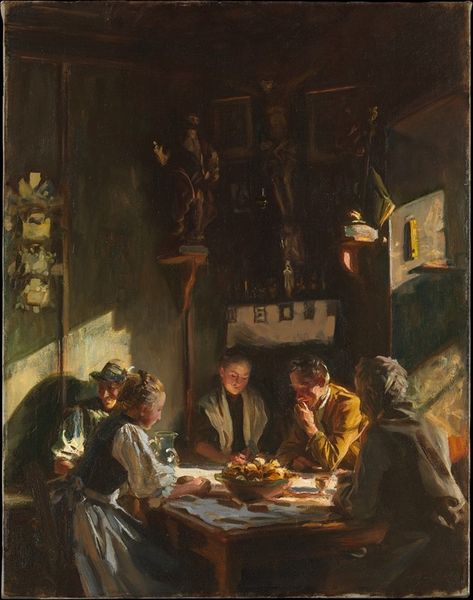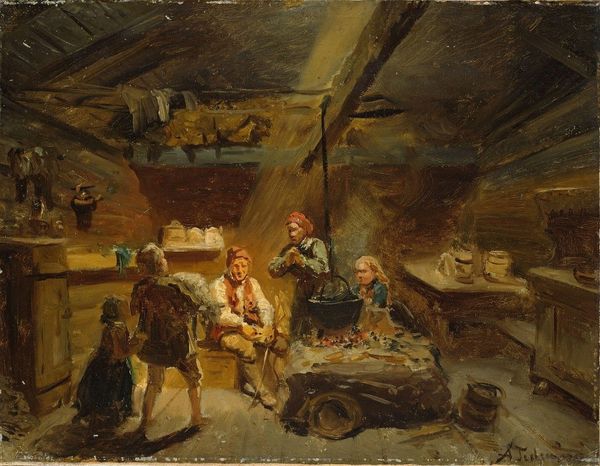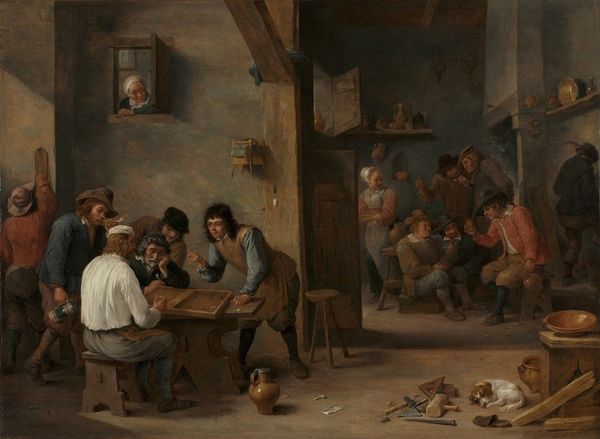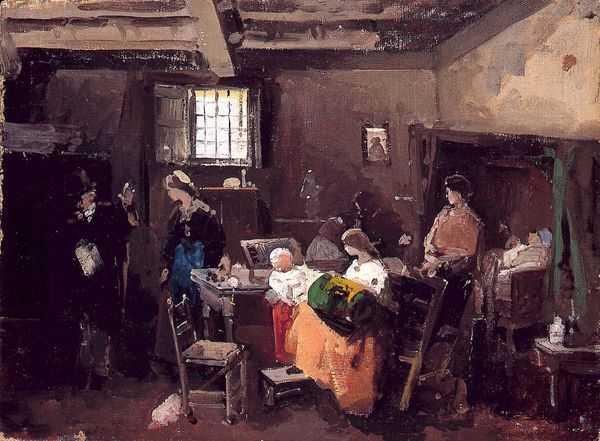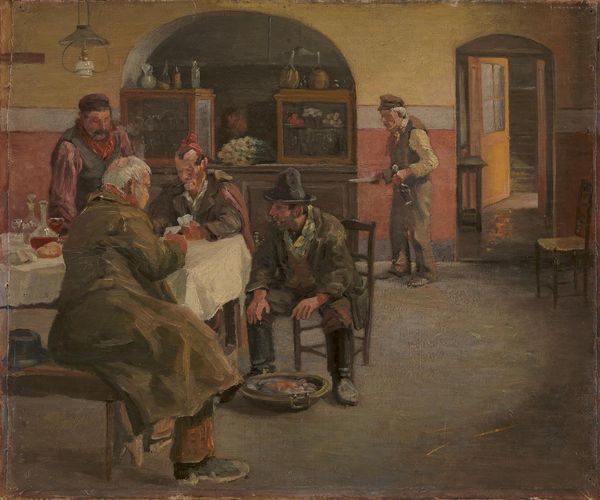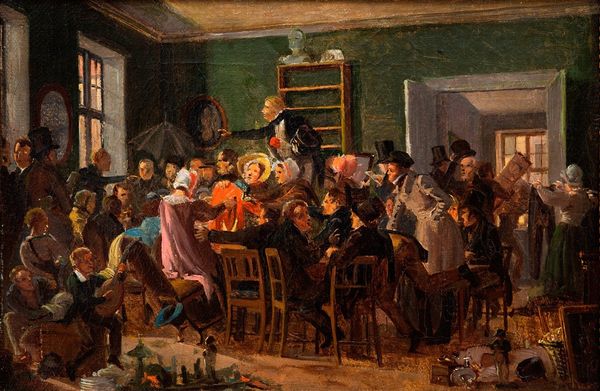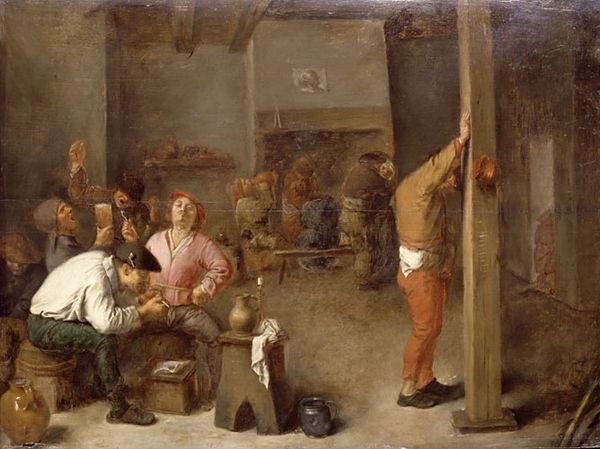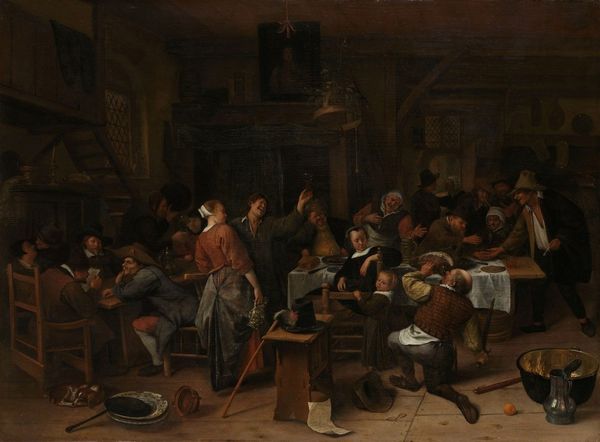
Collegium Politicum. From Ludvig Holberg’s The Political Tinker, Act I, Scene 2. 1850 - 1851
0:00
0:00
oil-paint
#
figurative
#
oil-paint
#
figuration
#
oil painting
#
romanticism
#
genre-painting
#
history-painting
#
mixed media
Copyright: Public Domain: Artvee
Curator: This oil painting, dating from 1850 to 1851, is Wilhelm Marstrand’s “Collegium Politicum. From Ludvig Holberg’s The Political Tinker, Act I, Scene 2." Editor: What strikes me first is the enclosed space, almost claustrophobic. You feel the weight of all that wood, the dark furniture, like the room itself is bearing down on these figures mid-argument. Curator: Marstrand definitely captures that sense of dramatic irony so crucial to Holberg’s satire. Think about it: these supposed authorities, supposedly gathered to debate politics, are reduced to petty squabbles. Look at the dynamism: all eyes focused on the document, a focal point where the chaos and disorder seems to sprout. Editor: It's not just about chaos. Check out how the materials contribute—the rumpled paper, the sheen on those worn wooden chairs, the evident texture of oil paints all adding a physical dimension to their dispute. What's that guy writing with – a quill? Look how well-worn everything appears. All speak volumes about class, privilege, and labour invested in those accoutrements. Curator: Precisely! The piece has this undercurrent, the air is thick, the light is warm yet tense, with one man, caught in the fire of argument, standing up. He doesn’t sit at the table like all the other formally dressed gentlemen – he appears almost disturbed from a thought – this suggests something boiling beneath the surface, almost like they all put on a show – but behind this facade lurks tension, division and chaos! Editor: Exactly, look at how Marstrand rendered their coats, their wigs, the meticulous craftsmanship… and then juxtapose it with what seems to be a chaotic, ill-tempered group. How do the physical garments reinforce, but also mock the supposed decorum of this "Collegium Politicum"? Are their roles reinforced, or are we invited to laugh at the pretension by a shift to genre painting? Curator: What remains resonant to me is how relevant this tableau still is. We still find ourselves, in all eras, embroiled in endless political theatre, in endless debate which is sometimes nothing but smoke and mirrors. The message continues to spark, and perhaps that's the work’s quiet genius, what do you think? Editor: I see how this "smoke and mirrors" relies, literally, on material things - ink, paper, wigs, oil paint – so those aren't distractions, but ways in which this particular brand of historical commentary and observation actually becomes tangible.
Comments
No comments
Be the first to comment and join the conversation on the ultimate creative platform.
